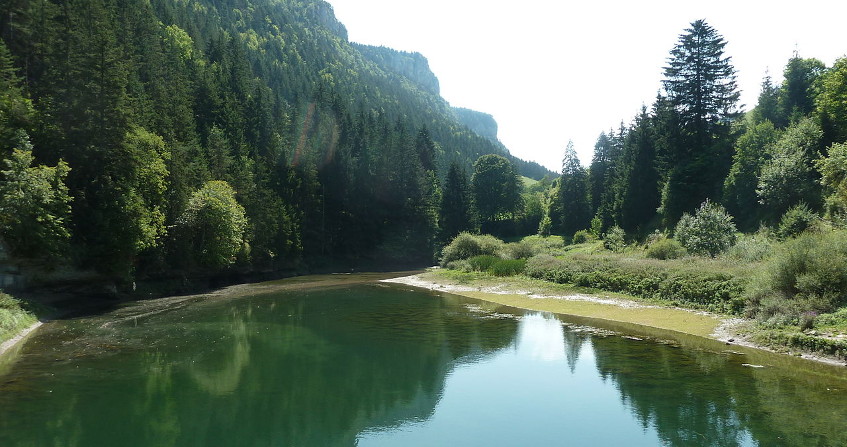自然灾害——当环境变成威胁时
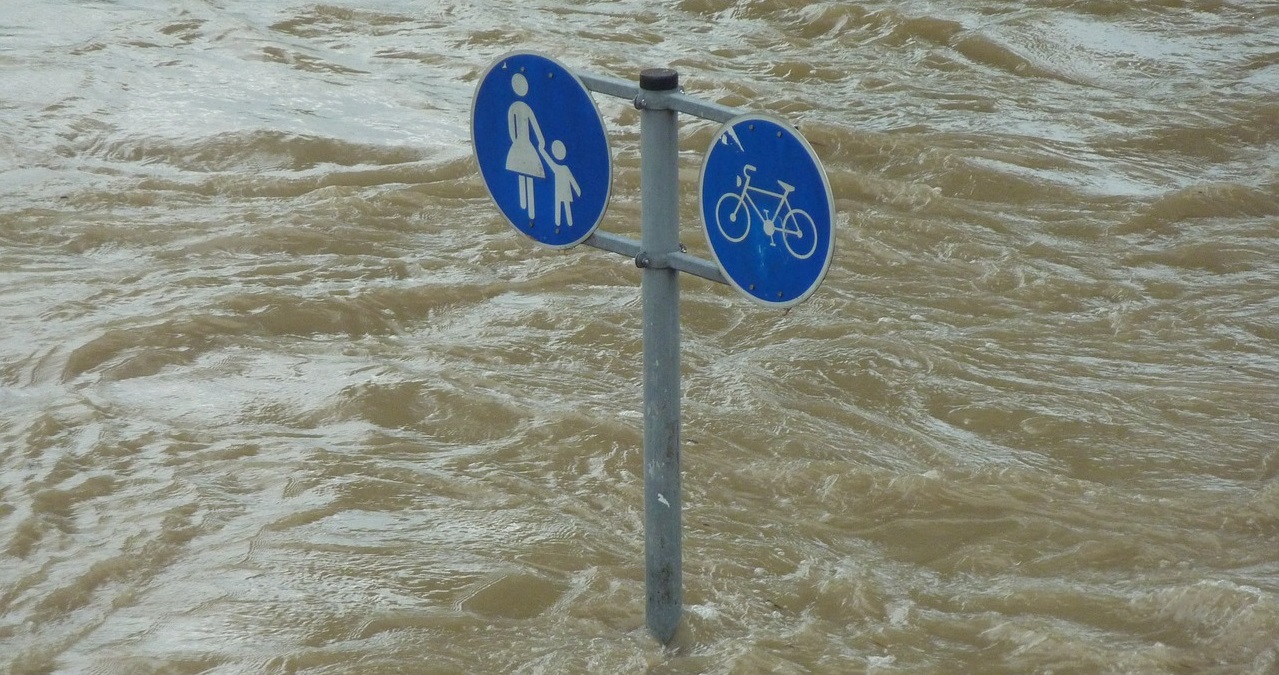
当大自然以自然灾害的形式展现其破坏力,直接对社会产生影响时,环境就变得极具威胁性。本文介绍了近年来自然灾害的演变过程及其对人类的影响,解释了当环境成为一种威胁时,科学如何进行应对,使用了哪些工具来观察、理解、模拟和预测自然现象及其可能造成的影响。文章最后,分析了这项研究如何帮助管理者管理自然灾害,以及我们应在看待人与自然的关系方面取得哪些进展,以应对环境变化和未来的自然灾害。
1. 当环境成为威胁时
2016年6月 “法兰西岛爆发洪水灾害”“巴黎洪水泛滥成灾”成为报纸头条。当环境对居民及其财产和活动造成风险时,大自然再次彰显其威力,令政府和人民担忧不已。这就提出了研究者如何帮助人们认识这些现象的问题。这些知识如何才能为减少受害人数和影响做出具体贡献?
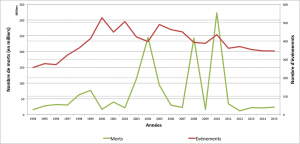
自然灾害流行病学研究中心(Centre de Recherches sur l’Épidémiologie des Désastres, CRED)记录了世界上发生的所有自然灾害,并研究了它们的演化过程[1]。据2015年统计数据显示,1994年至2015年间,全球共发生了8,600多起自然灾害,造成了150余万人死亡,每年受到自然灾害影响的灾民有近7.6 万人。图1显示了过去20年自然灾害次数和死亡人数的变化情况。
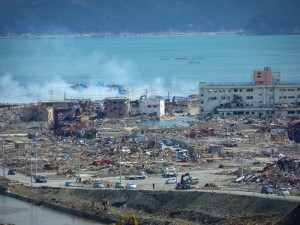
图1红色曲线显示,1990年代后期,每年的自然灾害数量呈增长趋势,随后在2001-2010年间出现震荡,平均每年约发生477起灾难事件,自2011年以来稳定在350起左右。这些自然灾害造成的死亡人数(绿色曲线)以特大人员死亡事件为标志。例如,2004年,印度洋地震和海啸造成了超过22.6万人死亡;2008年,中国四川地区发生地震,造成8.7万余人死亡;2010年1月12日,海地发生7级地震,造成22万余人死亡;2011年3月11日,日本本州岛发生了9级地震,这次地震本身造成人员伤亡很少,然而随后发生的海啸造成1.8万余人死亡,并引发了福岛核事故(图2)。
由上述图表可知,仅一次地震就会对人类造成致命危害。然而在全球气候变化的背景下,洪水、风暴、热浪等气候现象同样令人担忧。以法国为例,过去20年里法国发生过86起自然灾害事件。其中,造成死亡人数最多的自然灾害是极端气温,造成2.4 万余人死亡。最为严重的是2003年的热浪造成 1.5 万人死亡,其中主要是老年人。(参见 气候变换——对人类健康的影响)
2. 了解形成机制
最早关注自然灾害形成机制的是地球科学和气候学科学家,他们的研究使人们对自然灾害形成的物理机制有了更加深入的了解。但该领域仍待进一步探索,因为迄今为止,科学家们仍然无法完全解释为什么有些地区比其他地区更容易受到受自然灾害的影响。让我们回顾一下2003年。5月21日,阿尔及利亚布默德斯地区发生了6.7级地震,造成2300余人死亡,10,200人受伤,18万人无家可归[2]。几天之后的5月30日,日本本州岛也发生了7级地震,没有造成人员死亡,只有建筑物轻微受损,100余人受伤[3]。然而,12月26日伊朗东南部发生了6.5级地震,造成3.5万人死亡,3万人受伤,几乎摧毁了整个城市[4]。为什么近乎同等级的地震对不同城市造成的影响存在如此大的差异?要理解这一点,有必要考虑其他因素的影响,尤其是人为因素。
1755年,葡萄牙首都里斯本发生了特大地震,造成约6万人死亡。卢梭和伏尔泰就此事件提出了自然灾害中的社会责任问题。伏尔泰捍卫自然主义的观点,认为地震是不幸的巧合。卢梭则持完全相反的观点,指出里斯本所处区域是公认的地震活动带,而板块运动造成的地震势必会危及当地居民。他毫不怀疑这场灾难的社会责任(Bouhdida,2014 [5])。这场争论预示着我们思考风险与社会之间关系的方式发生了重大转变。随着工业社会的不断发展,人类社会已经进入了德国社会学家乌尔里希∙贝克(Ulrich Beck)所提出的“风险社会”[6],现代社会所面临的风险并不只是来源于外部的自然灾害,社会工业生产和先进技术滥用同样会造成一定危害[7]。
基于上述背景,我们提出了两个疑问:如何理解被定义为风险的环境的复杂性?如何定义社会风险?首选方法是研究“脆弱性”这一概念。维斯纳(Wisner)等人将脆弱性定义为遭受伤害甚至死亡、生活资产损坏或丧失的概率[8]。这种概率取决于多种因素,研究人员正在努力界定和评估这些因素。因此,降低风险还必须包括限制公司及其资产和活动的脆弱性。
减少脆弱性需要了解其机制。自然灾害是受灾社区和社会中人口和地区脆弱性的有效指标[9]。因此,研究人员试图从自然灾害本身入手,理解脆弱性的真正内涵,挖掘脆弱性的表征,以期减少脆弱性。目前该领域的研究已经确定了部分影响因子。例如,贫穷是解决全球脆弱性的一个重要因素。最贫困的人口也是受自然现象影响最严重的人口。但最近发生的事件,如2005年美国的卡特里娜飓风和2011年日本的福岛地震,表明贫困并不是导致区域脆弱性的唯一因子,其他因素也可能增加或减少社会和地区的脆弱性。其中包括组织和政治因素:社会是否为此类事件做好了准备?政府是否能够及时止损?
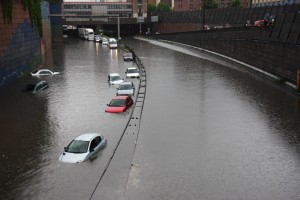
近期研究表明,当洪水来临时,行动能力是一个特别重要的脆弱性因素。行动不便的老人、幼儿、残疾人比其他人更容易受到伤害。研究还表明,驾车者往往也很脆弱,尤其是当遭遇地中海地区特有的洪水时。这些现象常常让人们在日常出行中措手不及,汽车很容易被猛烈的水流冲走(图3)。在欧洲,因山洪暴发而失去生命的受害者中有一半是驾车者[10]。
综上所述,自然灾害是同一时空内气候、水文、地球物理现象与特定区域结合的产物,而该区域必定在某方面具有脆弱性。因此,探究自然灾害形成机制必须了解特定时空条件下所发生的物理和社会现象等。
3. 观察和模拟预测
为了解自然灾害风险,需分阶段进行跨学科工作。观察和数据收集是了解物理和社会过程的重要阶段。不过,在实地观察的同时,建模是十分有用的。它包括制作一个简化的情况模型,以测试某些限制因素或难以观察到的因素的作用。例如,我们重现了洪水泛滥时的道路交通网络模型,研究影响人们在道路上遇到洪水的变量:出发时间、是否穿越某些临界点、行走路线等[11]。因此,建模既可以更好地了解事件发生时的情况,也可以通过放大某些限制条件来检验特定假设。例如,如果所有人都在同一时间出发,选择洪水泛滥的路线,并不顾情况继续前行,那么会有多大比例的人将自己置于风险之中?这种建模并不需要精确地反应实际状况,而是要通过该模型来探索自然灾害发生过程中各种因素的作用。
自然科学家常常使用模型来理解复杂的自然现象,如大气中的云团环流。法国气象局的预报员以不同尺度的气象模型为基础,结合当地实际观测情况,才得以预测了未来几天甚至几周的天气状况[12]。他们可以提前预测某些极端事件(确定程度不一),如风暴、暴雨、热浪等(有关天气事件的更多信息,请参见“空气”部分)。能够预测这些自然灾害及其影响是当前研究的目标之一,然而,要更好地全面了解自然灾害发生时所造成的影响,并能够提供相对准确的信息,仍需更多探索与研究。
预测自然灾害事件及其影响具有高度复杂性。以2011年日本福岛惨案为例,我们根本无法提前预知地震所带来的海啸对整个核电站造成了严重的破坏,再加上事件发生后政府机构的犹豫不决和决策失误,导致福岛几近毁灭。当大自然和人类的综合力量交织在一起,形成更大的威胁时,社会该如何预测、准备和保护自己?这些问题是当前风险研究的核心。为应对未来极端环境气候挑战,我们仍需开展数据观测、分析和建模等工作。
4. 应对当前环境挑战
将环境视为潜在的危险意味着重新审视人类和自然的关系,审视自然的破坏力。在过去的几个世纪里,科学发展使人们对自然现象的理解更加深入,专家们也通过实施技术解决方案来控制自然灾害的发生。19世纪以来,历史学家和水文学家协同合作,利用科技进步限制自然灾害,尤其是洪水的影响。尽管如此,源于自然的极端事件还是会经常引发人类能否真正控制自然的问题。这提醒人们面对自然要保持谦卑。
我们已经意识到全球范围内的自然环境发生了重大变化,我们必须承担起社会责任,也必须重新审视人类和自然之间的关系。在面临气候变化所带来的严峻挑战时,一些社会科学研究者仍然对自然灾害的形成机制及其解决方案充满疑虑。因此,除了要阐释风险和脆弱性的定义,也必须明晰适应性和复原力的概念。后一个概念的定义非常不同。根据心理学提出的定义,复原力指知道如何“找到必要的能力来适应危害”[14]。因此,这个概念并不是要控制自然以防止自然灾害发生,而是要找到国家和社会的内部资源来应对灾害并限制其影响。这种应对风险的新方法强调了从个人到社会在确定和调动这些资源方面的责任。为了更好的应对自然灾害,未来的研究还需要提供更多的知识,以帮助人们了解环境进程的复杂性,使人类社会更具复原力。
参考文献及说明
[1] 天主教鲁汶大学,比利时,详情请见http://www.cred.be/和http://www.emdat.be/database。
[2] BRGM,“2003年5月21日布默德斯(阿尔及利亚)发生地震——千叶效应带来的悲痛结局。”,[网络资源],查阅于2016/7/19,详情可见:www.brgm.fr/sites/default/files/evenement_exposition_seisme_img08_original.pdf。
[3] IRSN,“2003年5月26日周一上午9时24分宫城县(日本)发生七级地震。”,[网络资源],见网于2003/5,查阅于2016/7/19,详情可见:www.irsn.fr/FR/connaissances/Installations_nucleaires/La_surete_Nucleaire/risque_sismique_installations_nucleaires/Documents/irsn_Seisme-Japon_052003.pdf。
[4] CNRS,“2003年巴姆(伊朗)发生的可怕地震”,CNRS中心,[网络资源],2005/12前见网,查阅于2016/7/19,详情可见:www2.cnrs.fr/presse/thema/724.htm。
[5] BOUHDIBA,S,“1755年11月1日的里斯本:这场灾难真的只是一次巧合么?伏尔泰和卢梭就此进行争论。”,“几乎无处不在”的研究假设,[网络资源],见网于2014/10/19,查阅于2016/4/27,详情可见:http://presquepartout.hypotheses.org/1023。
[6] BECK,U,2001,风险社会:现代化的产物,由贝尔纳迪(L.Bernardi)于巴黎奥比尔译自德语,第521页。
[7] BOUZON A.,乌尔里希·贝克(Ulrich Beck),意大利兴业银行,“在通往现代化的另一个道路上”,由贝尔纳迪(L.Bernardi)译自德语,社会问题,[网络资源],2|2002,见网于2013/7/23,查阅于2016/7/19,详情可见:communication questions.revues.org/7281。
[8] WISNER, B., BLAIKIE P., CANNON T., DAVIS I.,2004,“人类正处于危险中:自然灾害、人类脆弱性和灾难”,第二版(1994年第一版),纽约,劳特利奇(Routledge),第470页。
[9] LEONE, F., VINET, F.,2006,脆弱性、自然风险评估方法核心的基本概念摘自:LEONE F.和VINET F.(目录):“社会和领土对自然威胁的脆弱性”,地理分析,地质灾害,第一节,保罗·瓦莱里·蒙彼利埃大学出版物,第9-25页。
[10] RUIN, I., CREUTIN, J. -D., ANQUETIN, S., LUTOFF C.,2008,“山洪暴发威胁人类生存——2002年9月法国南部风暴期间洪水发生次数与人类脆弱性之间的关系”,水文学,361(1-2): 199-213,DOI:10.1016/d.jhydrol.2008.07.044。
[11] SHABOU, S., RUIN, I., LUTOFF, C., DEBIONNE, S., ANQUETIN, S., CREUTIN, J.-D.,2016,“MobRisk:一种基于大规模活动的移动性评估模型,可用于评估驾驶员等对山洪灾害的抵抗能力”,交通地理,已提交。
[12] 法国气象局,天气预报,[网络资源],查阅于2016/4/27,详情可见:
http://www.meteofrance.fr/nous-connaitre/activites-et-metiers/la-prevision-meteorologique。
[13] LANG, M., HEART, D., BROCHOT, S.,2003,“自然灾害的历史信息和防御工程:伊塞尔河和曼尼瓦尔河。”,第18卷,Quae版本。
[14] Villar Clara和David Michel,2014,“生态弹性是保护国土资源的工具么?”,于2014年IT-GO Rosko研讨会(Roscoff,2014年5月22日至23日)上发表,IT Go Rosko 2014研讨会网站:http://roscoff14.catalit.info/。
环境百科全书由环境和能源百科全书协会出版 (www.a3e.fr),该协会与格勒诺布尔阿尔卑斯大学和格勒诺布尔INP有合同关系,并由法国科学院赞助。
引用这篇文章: LUTOFF Céline (2024年3月10日), 自然灾害——当环境变成威胁时, 环境百科全书,咨询于 2025年3月29日 [在线ISSN 2555-0950]网址: https://www.encyclopedie-environnement.org/zh/societe-zh/natural-disasters-when-environment-becomes-a-threat/.
环境百科全书中的文章是根据知识共享BY-NC-SA许可条款提供的,该许可授权复制的条件是:引用来源,不作商业使用,共享相同的初始条件,并且在每次重复使用或分发时复制知识共享BY-NC-SA许可声明。







